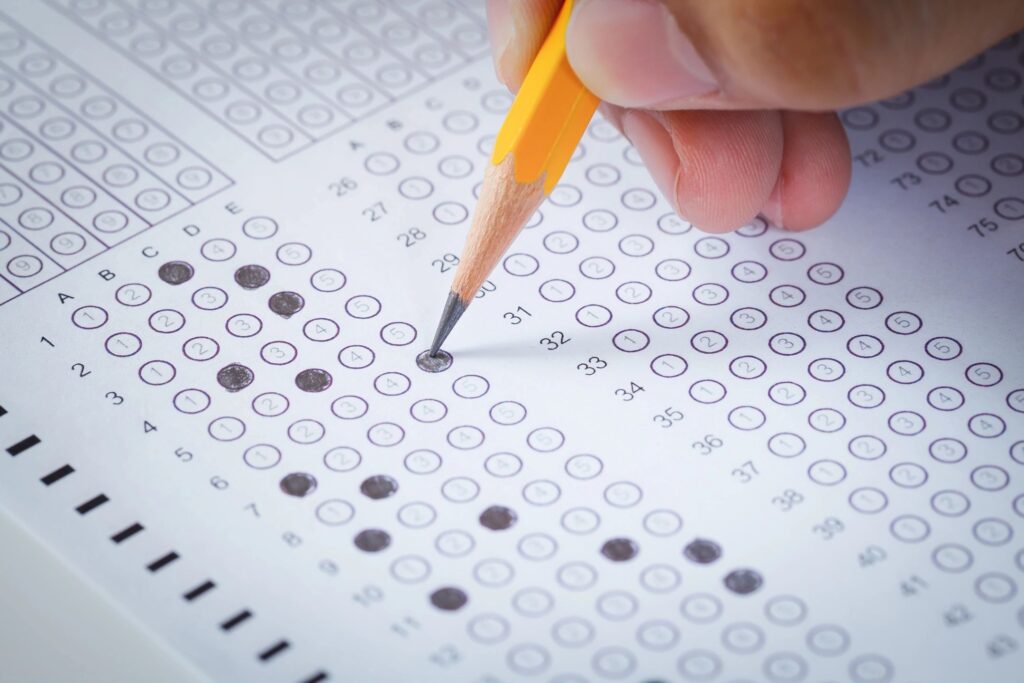Strengthening the profession
While the science of teaching[1] (and assessment)[2] is relatively young, there is cognitive science and empirical research to inform our teaching and assessment practice. However, as a field, too often we lack shared understanding of research, lack a common vocabulary to apply our understandings and struggle to adopt the structures necessary that permit educators to work together to apply evidence-based strategies to guide their practice[3].
Sharing knowledge and practice
The Michigan Assessment Consortium (MAC) believes that the growing body of assessment research and knowledge about evidence-based practice offers great benefit to Future of Learning Council (FLC) districts’ commitment to more student-centered and personalized instruction and assessment practices. And the MAC is committed to share knowledge and resources with district leaders to support them in meeting the needs of all learners.
FLC aims to provide structured support for district leaders seeking to implement education models that push our structures and practices well beyond limits associated with current policy and practices. Transformational change requires understanding what research offers, as well as development and use of a common vocabulary to talk about our practice and to apply our understandings.

Moving toward student-centered assessment & role of performance assessment
Defining what we mean by student-centered instruction is a good place to start. Then we can examine how the role of assessment in promoting student-centered classrooms illuminates paths to necessary policy and practices.
Perhaps the best way to understand what we mean by student-centered instruction is to contrast it against more traditional, teacher-centered practices. The teacher-centered classroom has a few distinct features including tight teacher control of what students will learn, how they will learn it, and how student learning will be measured. More specifically, in a teacher-centered classroom we would expect to see students sitting quietly in desks or at tables awaiting teacher direction. Most interactions between teachers and students would be through teacher delivery of information and then teacher-led “recitation” where the teacher asks a question requiring a short answer, factual response, the students supply the “correct” response, and the teacher commends students or corrects them and then moves on to the next question. Furthermore, in the teacher-centered classroom, teachers administer tests that they score and record and ultimately translate into grades that they codify in report cards.
In contrast, in the student-centered classroom teachers structure learning activities for students that require them to engage deeply with content in ways that replicate or at least approximate how others have constructed knowledge in the domain (rather than presenting them with “distilled” information of a lecture). During these activities, students often work together and collectively take own the primary responsibility for completing the activity. In the student-centered classroom, discussions become opportunities for students to express their emerging understanding, hear how others are making sense of new learning, and incorporate others’ understanding into their own efforts to achieve mastery. It is important to note, however, that rather than taking a “hands-off” approach in the student-centered classroom, the teacher is working diligently with students to help them clarify the goals for their learning, surface students’ current understanding, connect students to resources, provide them with just-in-time feedback, and help them think through next steps.
When we change our conception of quality instruction to one that is more student-centered, there are implications for assessment practices. We must determine the proper use and forms of assessment when learning is student-centered. Performance assessments require students to demonstrate their understanding through their engagement in authentic tasks salient to practitioners in the discipline. In these ways, performance tasks make the students’ understanding visible to teachers in ways that teachers can use to propel student learning forward and enhance their conceptual development.
Teacher-centered assessment
- Focus of recall of factual information
- Facilitate ease of scoring
- Distribute students along a bell curve of achievement
- Measure achievement that translates to grades
- Mark the end of the learning
Student-centered assessment
- Requires students to engage in authentic disciplinary tasks
- Provides teachers with insight into student understanding
- Serves as an opportunity for teacher to provide actionable feedback
- Propels learning forward when student use feedback to pursue next steps
MAC’s Learning Point on What types of assessment methods can support student-centered instruction? explains that understanding the link between conceptually rich, student-centered classrooms and performance assessments is a single, but important, point of understanding. That’s because performance assessments promote the generation of the necessary evidence of students’ conceptual understanding.
Student-centered instruction and assessment connect to 21st Century skills
Preparing students for post-secondary life is predicated on understanding the rich, complex skills needed to function in the 21st century work world and contribute to our global community. Students will need to transfer their learning to new situations. Author Jay McTighe describes cornerstone performance tasks as those that are curriculum-embedded; they anchor the curriculum to the most important performances learners need to carry out on their own using their content knowledge and skills. They provide the means for educators to collect evidence – through assessment – of student growth toward learning outcomes. MAC Learning Point How do we design assessment systems for modern learning? addresses this in more detail.
Watch for future posts in this “Assessment in the Learner-Centered Classroom” series, including:
- The purpose and power of the formative assessment process to realize student-centered instruction, and
- Where and how student-centered classroom instruction and assessment contributes to a balanced assessment system and an equitable education for our public school students
[1] National Academies of Sciences, Engineering, and Medicine, How People Learn II: Learners, Contexts, and Cultures (2018)
[2] National Academies of Sciences Engineering, Medicine, Knowing What Students Know: The Science and Design of Educational Assessment (2001)
[3] City, E. Elmore, R.F, Fiarman, S.E. and Teitel, L. Instructional Rounds in Educations Harvard Education Press, (2009)
| Kathy Dewsbury-White, Ph.D. CEO OF MICHIGAN ASSESSMENT CONSORTIUM | John Lane, Ph.D. SENIOR RESEARCH ASSOCIATE FOR THE FORMATIVE ASSESSMENT FOR MICHIGAN EDUCATORS |




